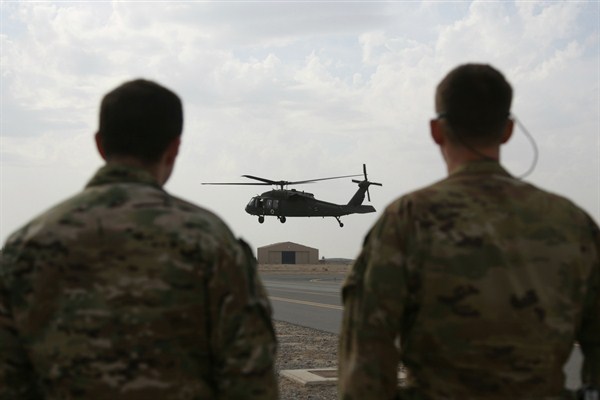In rapid succession, America’s mercurial commander-in-chief has changed U.S. policy toward two of the world’s most tragic and intractable conflicts. In Afghanistan and Syria, President Donald Trump has simultaneously ramped up U.S. involvement and insisted that America cut its losses and get out. In both cases, it is hard to track the true underlying strategy that would achieve some durable American objectives. Rather, he is approving policy tactics formulated to respond to worsening conditions on the ground and to the advice of his military commanders, who see the larger consequences of security setbacks.
First, the facts. It was late last year that Trump reversed course on Afghanistan from his campaign pledge to wrap up operations and come home. Last November, he agreed to increase the U.S. troop presence to 15,000 and allow more flexible rules of engagement for what is technically a U.S. support mission for Afghan forces. But the recent successes of the Taliban, which has extended its control of rural provinces and shown its capacity to conduct lethal attacks inside Kabul’s most secure zones, have changed the calculus for military commanders. Secretary of Defense James Mattis, Chairman of the Joint Chiefs of Staff Gen. Joseph Dunford and Gen. Joseph Votel, who heads U.S. Central Command, have all visited Afghanistan in recent weeks. On March 30, Dunford called the revised guidelines a “fundamentally different approach” that permits U.S. soldiers to work more closely with Afghan forces as they pursue this resilient adversary. Stories are emerging more frequently about the Taliban’s improved battlefield capabilities, thanks in part to U.S. equipment that was either stolen or sold by America’s Afghan partners.
On Syria, the facts are found in presidential messages to the State Department late last week, which expressed the president’s renewed desire to reduce America’s footprint and obligation in Syria, beyond defeating the self-proclaimed Islamic State. On Friday, the State Department was informed that all future aid for Syrians—some $200 million earmarked for recovery efforts—was being suspended. It covers stabilization programs to help restore basic infrastructure and services for Syrian civilians in areas not under government control. As Trump later told a crowd in Ohio, “We’ll be coming out of Syria, like, very soon. Let the other people take care of it now.”

